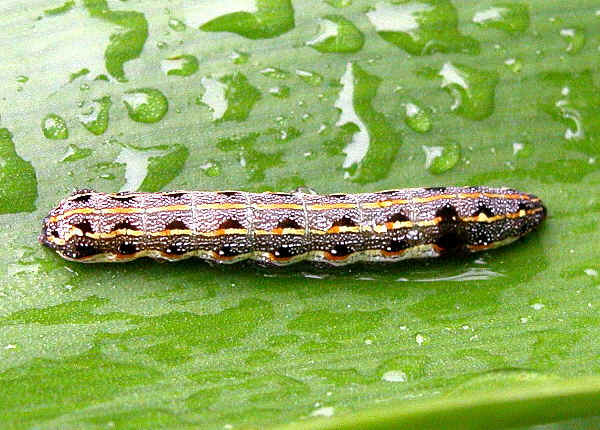

There is a distinct black "dagger-like" dash near the front margin of each fore wing. Moth ID: reddish-brown with front wing that is brown to black in the center two thirds and clay colored near the tip.


*Please note: The page (pg) and plate (PL) numbers refer to the locations of the written and photographic descriptions of these moths in: Covell's Eastern Moths. Setting traps at this time should ensure that your traps are in place before the first flight. The dates for setting traps are based on a two week lead time for the average first capture at the University of Kentucky Research and Education Center in Princeton, KY. The following information is specific to each insect. Large numbers of moths can be dumped into a trash bag and then disposed of outside the field. Discard these individuals away from the field. Always remove all captured moths during each visit.Minute traces of other chemicals can render some baits completely ineffective. Moths can detect these pheromones in nanogram quantities (1 nanogram = 0.000000001 gm). If your are not careful, you can cross contaminate your baits. Wear rubber gloves or wash your hands between handling baits.Even the most minute amount of pheromone may compete with your bait. Do not leave spent baits or bait wrappers near the traps.Baits usually last only 4 to 5 weeks so change monthly.Once the bait is out of the package you can not tell what it is. Always label the trap with the name of the species you are trapping and the date the bait was changed.Send moths in for identification to verify your decisions. Identifying moths from their color patterns is an art.These scales are easily rubbed off, after which all moths look about the same. Moths are covered with scales giving them color or patterns.Moths have four wings, the first pair are the fore wings, the second pair are the hind wings or underwings.


 0 kommentar(er)
0 kommentar(er)
